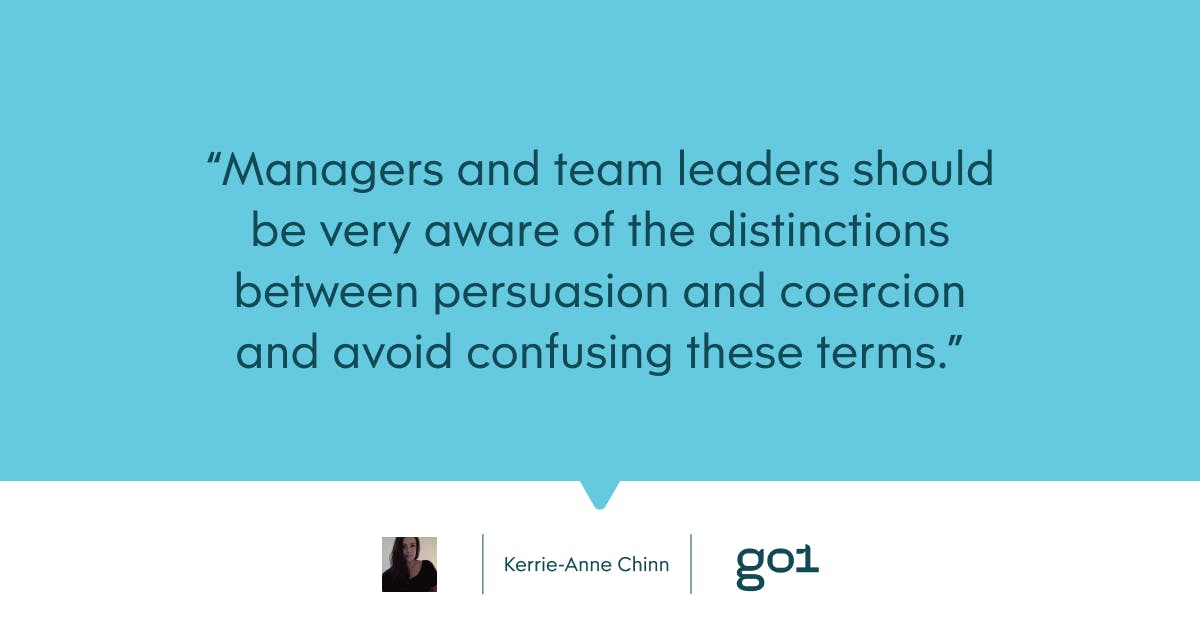
Can manipulation be used in a positive way?

No one likes being manipulated. Whether it’s in our personal or professional lives, the idea of manipulation is generally considered to be a bad thing.
Most of us associate manipulation with negative connotations, such as people trying to take advantage of us or push us into doing something we don’t really want to do. But have you ever thought about the potential of manipulation for positive change?
Today, we’ll look at how manipulation can sometimes be a good thing — as surprising as this may sound.
Manipulation is already everywhere
Whether or not you realise it, you’re most likely being manipulated every day, in both your personal and professional life. The power of manipulation is harnessed by marketers and businesses everywhere to convince us to buy certain things and live our lives in certain ways.
Buy this brand of shoes.
Eat more vegetables.
Quit smoking.
Vote for this political party.
So, which of these cases of manipulation are good and which are bad? Is it wrong to encourage people to give up smoking or embrace a healthier lifestyle, or can we consider that a form of positive manipulation?
The difference between persuasion and coercion
By definition, the word ‘manipulate’ — meaning simply “to handle or control in a skillful manner, or to control or influence a person or situation” — does not hold any inherently negative connotations.
However, the use of this control or influence can become a negative or positive thing depending on whether it takes the form of persuasion or coercion. It’s important to understand the difference between these actions, particularly for employers and managers.
- Persuasion is about getting people to do things they want to do
- Coercion is about getting people to do things they don’t want to do

Managers and team leaders should be very aware of the distinctions between persuasion and coercion and avoid confusing these terms. While encouraging or motivating staff can be considered positive persuasion, coercion is unacceptable in the workplace and can be a form of bullying or harassment.
Manipulation for managers
Good managers are always looking for ways to keep their teams engaged and motivated. It’s a vital part of professional development for employees, with many benefits for both the individual and organisation.
Positively manipulating your staff can be an effective management tool. Using a positive form of manipulation to motivate employees towards their goals can help improve their performance and allow teams to achieve organisational objectives.
Jonathon Fields summarises the differences between persuasion and manipulation (where ‘manipulation’ is a form of coercion), saying it comes down to three rules:
- The intent behind your desire to persuade that person
- The truthfulness and transparency of the process
- The net benefit or impact on that person
Think about these three things when looking for a behavioural change from a team member. Ask yourself how transparent your process is and what your reasons are for wanting to manipulate this person’s behaviour. You’ll know whether your intentions are for the benefit of that person or not.

As a manager or employer, it’s important to maintain your values and aim to only ever influence your staff ethically.
Using manipulation for positive change
Positive manipulation is also used by non-profit organisations and ethical companies to persuade people to act, thereby helping others in need and promoting positive change in the world.
In an article about manipulating people for good, Margaret Kelsey considers how individuals have the power to change people’s behaviour.
“But what’s the right way to use this power? How can you use psychology to persuade people ethically?” Kelsey asks.
Non-profits and NGOs use persuasion to attract donors, raise funds and promote awareness of important issues that need action or change – surely this is the right way to use this power?
Learn more about ethics in the workplace
If this has got you thinking about ethics in your workplace and how you can bring positive forms of manipulation to your role as a manager, there are plenty of courses that explore the topic in more depth.
Start your free trial with Go1 today to access dedicated courses on workplace ethics, persuasion, and many more.
For more insights, be sure to subscribe to the Go1 newsletter to stay on top of all the latest L&D trends. Or, you can book a demo today to find out how Go1 can help with your team’s learning needs.




